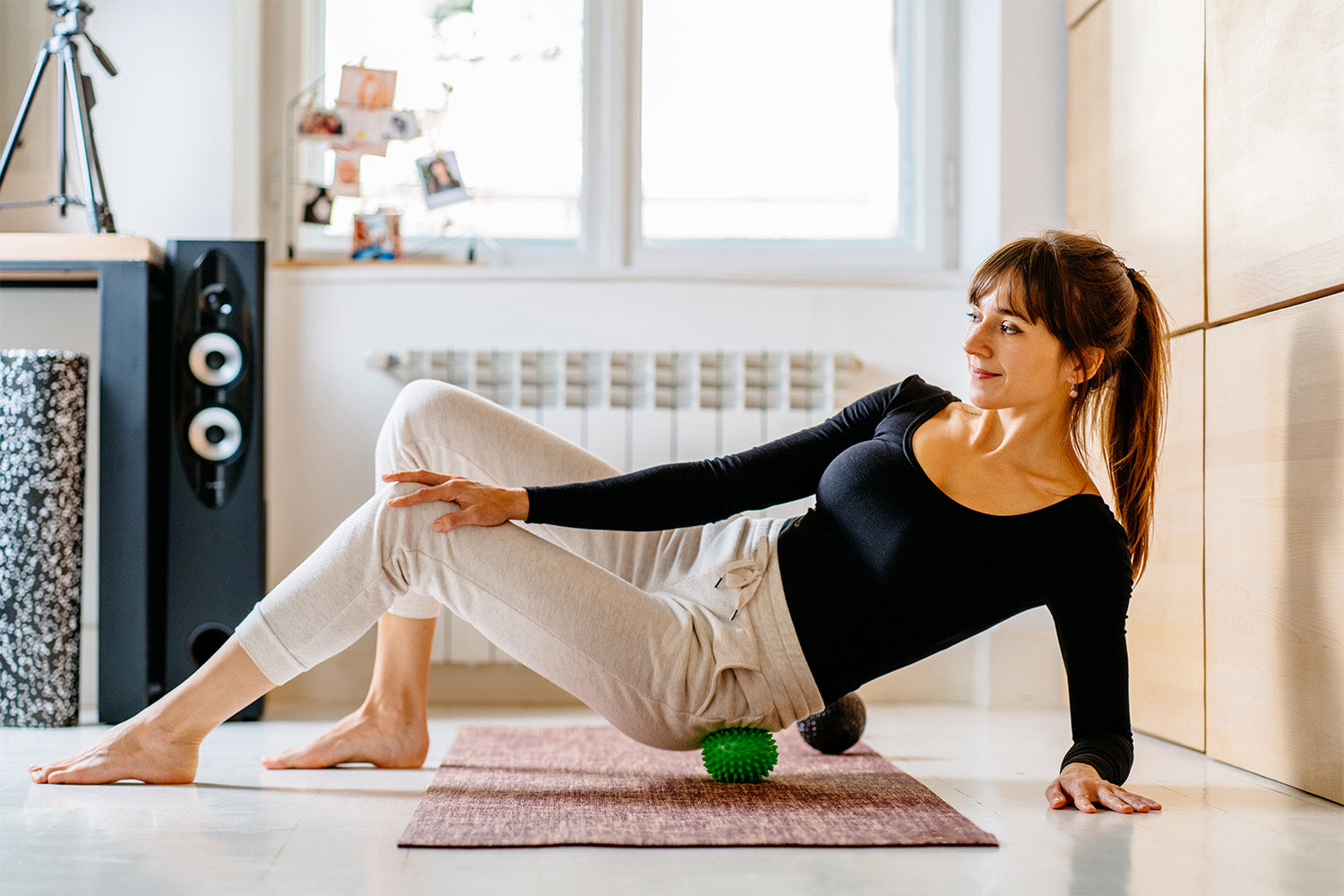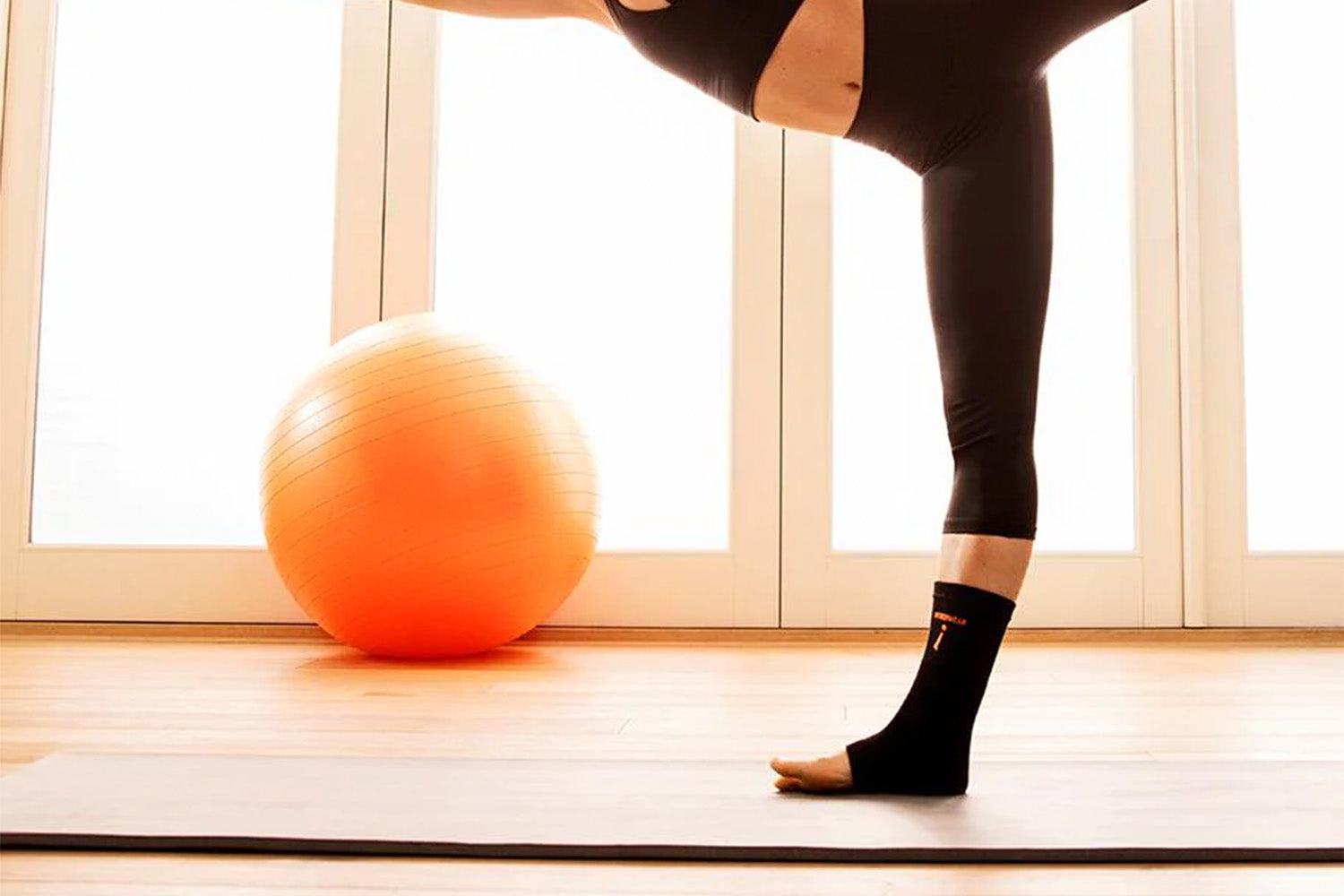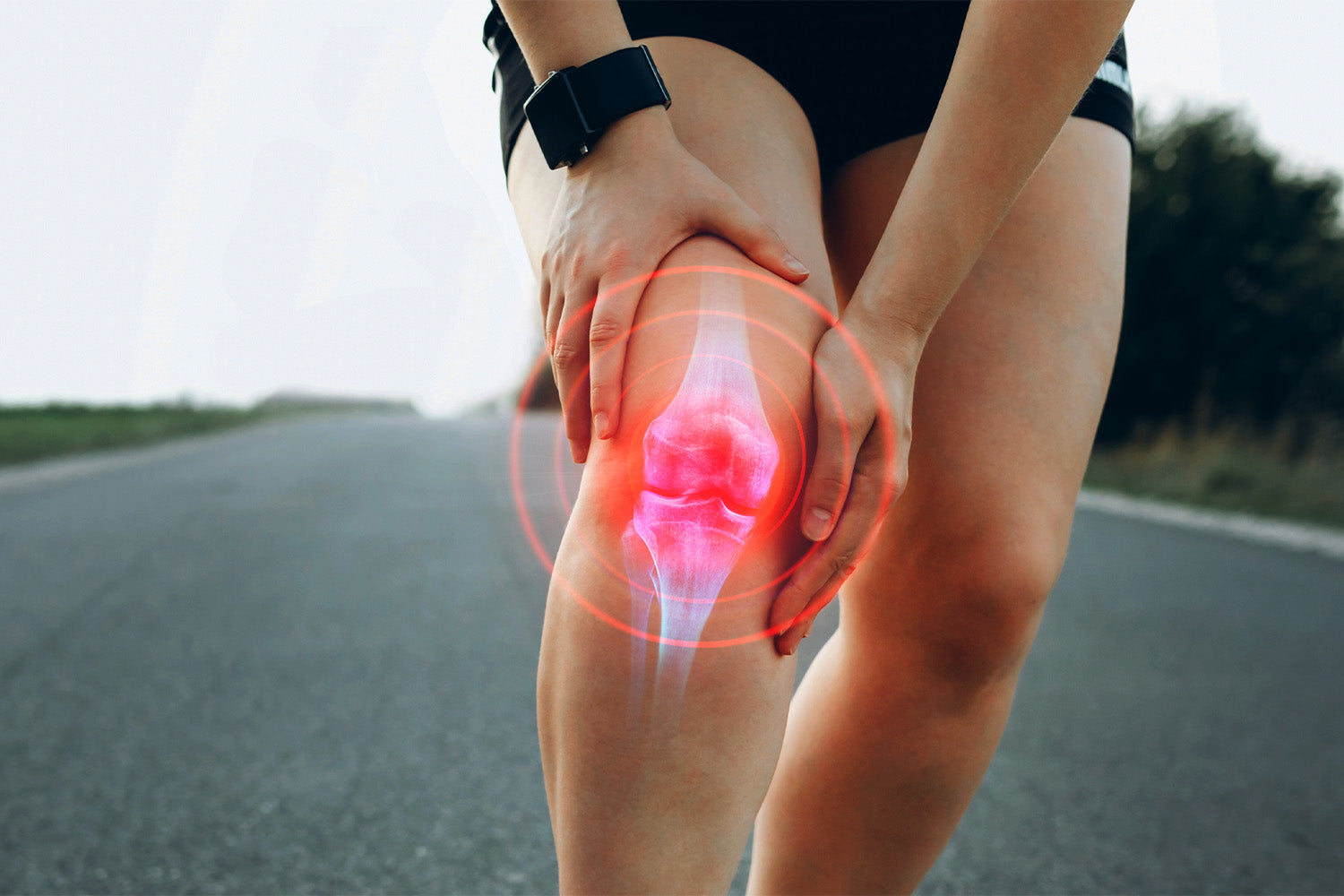Medically Reviewed By | Johannah Gregg, DNP FNP-C
If you’re an avid runner, you have likely experienced knee pain, strain, or injury. The knee is the biggest joint in the body and has a very intricate and complex anatomical structure. It is a central component of the running motion and experiences great stress and pressure.
Issues can arise due to many factors, including overtraining, improper recovery, malalignment of your bones, and more. No matter what the problem is, runners are constantly searching for ways to reduce pain, recover faster, and feel better so that they continue their training.
So what can runners do to stay on their feet? There are various forms of knee support out there, all with their own specific use cases and advantages and disadvantages.
We’ll get into what works and why certain tools are likely better options than others.
What Causes Knee Pain?
Before we get into the specifics of knee support, it’s important to lay out different knee issues and the course of action to take with each.
Knee Sprains and Tears
Knee sprains and tears are two of the most common injuries in the knees, and two of the most common injuries in general, among athletes.
Ligaments are the parts in our knees that act as the connecting tissue and hold all the bones together. Ligaments stabilize the knee’s allowing the human body to pivot and run backwards on command. When you overstretch or strain some or all of the little fibers that make up ligaments, sprains occur and can lead to severe pain.
When one of the four main ligaments in your knee, including the vulnerable anterior cruciate ligament (ACL), tears partially or completely, it is a cause for concern. You should stop all physical activity immediately. You may hear a pop, experience intense pain, your knee may swell to twice its normal size and be unable to put weight on it.
If you think you may have injured your knee in any way, you should stop running and seek help from a doctor. X-rays and other diagnostics will confirm an injury, and you will be put on a recovery protocol by a health specialist. Trying to run with acute injuries, even with some form of knee support, can cause a lot of damage to your joints and only make things worse.
Runner’s Knee
Another type of knee issue is “runner’s knee” or Patellofemoral Pain Syndrome. This is not an acute injury; instead, it’s a term used to classify pain brought about by one of a few knee problems. It involves the front of the knee (kneecap) and can have varying levels of severity.
These things can cause runner’s knee:
Overuse
Doing too many forms of exercise that put a lot of stress on your knees, like plyometrics (explosive squat jumps, thrusts, and lunges), can aggravate tissues inside your kneecap.
Malalignment
If some or all of your bones in the leg, from hip to ankle, are out of place can cause runner’s knee. Excess pressures can affect how the kneecap moves through its groove.Thus resulting in wearing out different aspects of your knees resulting in needing joint replacement in old age.
Feet Issues
Issues in the feet, like fallen arches or overpronation, may affect how you walk. A problem with form can cause pain in the knee.
Weak Thigh Muscles
Quad muscles help to keep the kneecap in place during movement. When these muscles are weak, it can slightly destabilize your kneecap.It is essential to have strong hamstrings to balance the strain of over strong quads.
Chondromalacia Patella
This is when cartilage breaks down below the kneecap, leading to parts rubbing together that shouldn’t.
This condition is common among runners (hence the name!), and you should talk to a doctor if you think any of these factors are affecting you. That said, knee support may help you curb the pain caused by this condition so that you can continue running.
General Wear and Tear
A lot of the time, knee problems will boil down to general soreness and achiness throughout the joint. If you know the pain isn’t coming from one of the underlying conditions listed above, and a doctor has cleared you of injury, then this is probably what you’re experiencing.
The good news is that this is normal — after a long training day filled with running and other workouts, your muscles need to put themselves back together on a cellular level. This is where the mild to moderate pain comes from, which is expected.
Looking for knee support is a great option to help fight and curb the symptoms of this process. Knee support can benefit you whether you are completely resting (passive recovery), doing an active recovery workout, or trying to push through your next full-on workout. Not only will it help with pain, but some types of knee support will also help you recover faster.
Prevention Is Best
Knee support and proper training to prevent pain is the best-case scenario. If you are worried about straining your knees, getting out in front of it with preemptive knee support is the way to go.
You do not have to be in pain to start your search for knee support. As you’ll see below, certain types of braces and sleeves can go a long way for those with perfectly healthy knees — aiding in the recovery phase (this is referring to workout recovery, not injury recovery) and helping to steer clear of any injuries, including the ones mentioned above.
Other Forms of Support
Aside from things like clothing, braces, and wraps, here are a few tips to help support your knees and keep you in the game:
- Make sure the muscles around your knees are well stretched and warmed up before a run. It is also equally important to stretch after the run.
- Work on core and leg muscles when in the gym. Plyometrics are great for strengthening knees.
- Ice your knees if sore after a run, or take a short ice bath.
- Mix in other cardio that gives your knees a break. Cycling is a great option because it is low-impact while promoting blood flow to the legs.
- Always ensure you are hydrated for a run and avoid alcohol the day before.
- Ensuring you are training your hamstrings and glutes, not just focusing on quad strength.
Traditional Knee Support Options
Let’s take an in-depth look at what standard options are currently out there on the market for knee support:
Knee Strap
When it comes to size, this is the most minimal form of support runners can wear. It’s a simple, thin band that wraps around the knee at or just below the kneecap. These straps can be worn directly on the skin, underneath or over the top of most tighter running clothes.
Because of their positioning on the knee, they are most effective at treating symptoms associated with Runner’s Knee or Osgood Schlatter’s disease. They help take pressure off the front tendon in the knee, reducing pain. Beyond this, however, they don’t do much for inflammation and recovery.
Knee Compression Sleeve
This is another minimal profile option and probably the most popular form of knee support today. The soft material slides snuggly over the entire joint, making compression sleeves able to fit underneath most clothes. Traditional sleeves rely on compression to help with pain and leave you with most of your range of motion, but not all of it.
While some may find relief from compression sleeves, read on to learn about better sleeve options from Incrediwear that are proven to work better while giving you a completely uninhibited range of motion.
Wraparound Brace
This type of knee support is similar to a compression sleeve, but as the name implies, you wrap it around your whole joint instead of sliding it on. It covers roughly the same area as the sleeve but is thicker, giving the knee structure more support. You also control the amount of compression by how tight you wrap it.
Again, Incrediwear offers an alternative type of wrap that supports your knee structurally and helps in additional ways that are more conducive to your body's natural healing energy.
Hinged Knee Brace
These provide the highest level of support; however, they are quite bulky and often do not allow a full range of motion. Hinged braces are made of strong, hard plastic and prevent the knee from caving in either direction. Their main use is to protect the ligaments within the knee from tears and sprains.
If the knee needs this level of support, it’s usually due to injury and, therefore, not typically worn by runners who aren't in recovery.
Incrediwear Knee Support
Today, more and more top athletes are moving away from “supporting” their joints with compression clothing. The main reason is that while it may temporarily reduce pain during activity, it can cut off blood flow to the surrounding area.
Promoting blood flow is crucial in helping the knee heal, besides just cutting down on pain. When the knee is supplied with blood, it gets more oxygen and nutrients, reducing inflammation and speeding up recovery.
The fabric used to make Incrediwear is unique; it is embedded with special semiconductors. When your body releases heat, the semiconductors are activated and release negative ions into your body. These ions create vibrations at a cellular level, increasing blood flow to the target area.
The best part about Incrediwear knee support is that it benefits your joints during and after activity. They will relieve pain while running and also help you to recover when you’re resting. They’re comfortable on your skin and leave you a full range of motion — keep it on 24/7!
Knee Sleeve
Our Knee Sleeve is a versatile option that’s great for runners and other workouts. It comes in several sizes and colors and can go right in the washing machine after a long day.
Bandage Wrap
The Bandage Wrap can be used on any part of the body, including the knees. It comes in two sizes, five-inch and two-inch, and the velcro allows for adjustable tightness.
Conclusion
Lifelong runners put a ton of stress on their knees day in and day out. Aside from taking other measures to protect and strengthen your knees, like staying hydrated, stretching, warming up, active recovery, or rest, there is innovative clothing you can wear to give your knees the extra support they deserve.
Whether you're working through general knee pain, trying to recover from a workout or injury, or trying to prevent future knee issues, the Knee Sleeve and Bandage Wraps from Incrediwear are a perfect tool to help you reach your fitness goals.
Sources:
Osgood-Schlatter Disease | Johns Hopkins Medicine
Plyometrics: Developing Power With Plyometric Exercises | NASM
Read more

Medically Reviewed By | Johannah Gregg, DNP FNP-C Many think of a “workout” as simply something to do to burn some calories, get your heart rate up, and flex your muscles — all while simultaneously...

Medically Reviewed By | Johannah Gregg, DNP FNP-C A sprained ankle is a frustrating but common injury. Despite being common however, it is still important to take aftercare seriously. If you sprai...






Leave a comment
All comments are moderated before being published.
This site is protected by hCaptcha and the hCaptcha Privacy Policy and Terms of Service apply.